Referenties, thematische inspiratie, terzijdes en voetnoten bij Bermuda.
- - - - - - - - - - - - - - - - - - - - - - - - - - - - - - - - - - - - - - - - - - - - - - - - - - -
1.
The End
a.
Shall We Dance | Mark Sandrich, 1937
- - - - - - - - - - - - - - - - - - - - - - - - - - - - - - - - - - - - - - - - - - - - - - - - - - -
2.
Vier films als leidraad
a.
Madonna | 'Into the Groove' (12")
track uit de film Desperately Seeking Susan | Susan Seidelman, 1985
--------------------------------
tagline: 'It's a life so outrageous, it takes two women to live it'
b.
Big | Penny Marshall, 1988
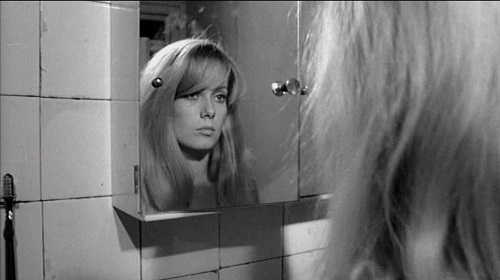
c.
Repulsion | Roman Polanski, 1965

d.
boven: Vertigo | Alfred Hitchcock, 1958
quote Madeleine: 'Only one is a wanderer; two together are always going somewhere.'
--------------------------------
onder: Desperately Seeking Susan
e.
Repulsion
f.
boven: Vertigo
onder: Desperately Seeking Susan
g.
Vertigo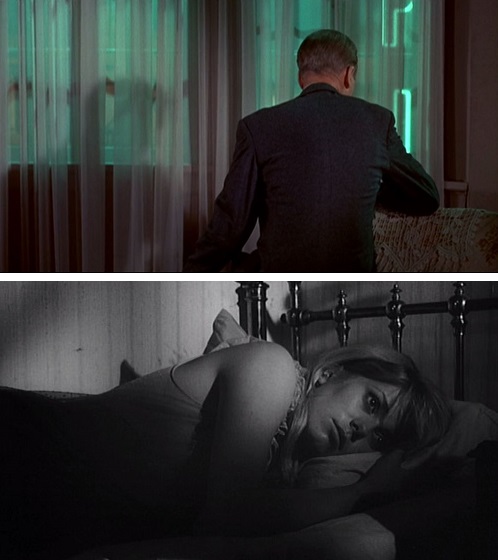
h.
boven: Vertigo
onder: Repulsion

i.
boven en onder: Big
- - - - - - - - - - - - - - - - - - - - - - - - - - - - - - - - - - - - - - - - - - - - - - - - - - -
3. Referenties
a.
All that Heaven Allows | Douglas Sirk, 1955
(publicity still, afgedrukt in Sight & Sound)
b.
'The Stranger Song' | Leonard Cohen
van het album 'Songs of Leonard Cohen' (1967)
c.
The Graduate | Mike Nichols, 1967
soundtrack: Simon & Garfunkel, met o.a. 'April Come She Will'
d.
links: Touch of Evil | Orson Welles, 1958
rechts: The Breakfast Club | John Hughes, 1985
e.
'We Gotta Get Out of This Place' | The Animals
f.
'Leaving on a Jet Plane' | John Denver
- - - - - - - - - - - - - - - - - - - - - - - - - - - - - - - - - - - - - - - - - - - - - - - - - - -
4.
Thema's
a.
Eva Stenram
b.
Total Recall | Paul Verhoeven, 1990
screenshot: Night of Error
--------------------------------
quote: 'U-huh pal, you've got yourself mixed up with somebody else.'
c.
The Picture of Dorian Gray | Oscar Wilde, 1890
'He lives the poetry that he cannot write. The others write the poetry that they dare not realize.'
d.
Body swap movies
Wikipedia: 'A body swap is a storytelling device seen in a variety of fiction, in which two people (or beings) exchange minds and end up in each other's bodies. In media such as television and film, the device is an opportunity for two actors to temporarily play each other's characters, although in some cases, dialogue is dubbed by the original actors.' [read more]
e.
Alice's Adventures in Wonderland | Lewis Carroll, 1865
illustratie: Sir John Tenniel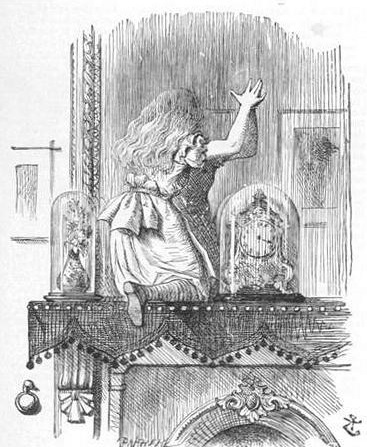

f.
Through the Looking-Glass, and What Alice Found There | Lewis Carroll, 1871
illustratie: Sir John Tenniel


g.
werk van Esther Zilversmit en Appie Bood
--------------------------------
boven: poster voor Filmmuseum
onder: still uit video Voor Omi

h.
Mannequin, Risky Business, Don't Tell Mom the Babysitter's Dead, Who's That Girl, Something Wild, Weird Science
--------------------------------
tagline: 'When she comes to life, anything can happen'
tagline: 'There's a time for playing it safe and a time for... Risky Business'
tagline: 'No rules. No curfews. No baths. No nagging. No pulse'
tagline: 'A funny thing happened on the way to the bus station'
tagline: 'Something different, something daring, something dangerous, Something Wild'
i
Frances Ha | Noah Baumbach, 2012
'And then does growing up simply mean letting go of the movie you thought your life would be?' (Annie Baker in haar essay 'Frances Ha: The Green Girl', voor The Criterion Collection)
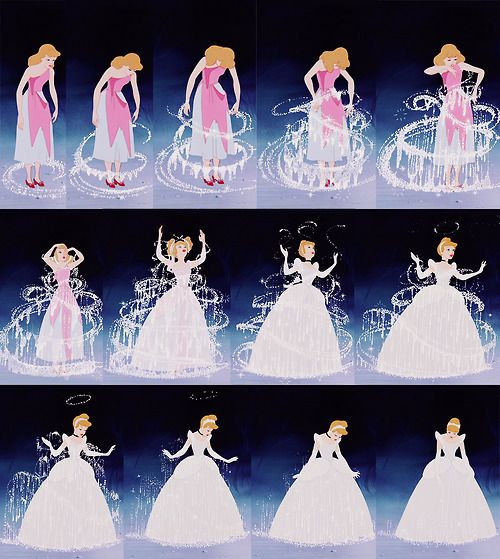
j.
boven: Peau d'ane | Jacques Demy, 1970
gebaseerd op het gelijknamige sprookje van Charles Perrault: een beeldschone prinses doet zich voor als eenvoudige dorpeling door zich in de huid van een ezel te hullen.
--------------------------------
onder: Cinderella, 1950
Assepoester, hier in de geanimeerde versie van Disney, transformeert op magische wijze van een slons in een schoonheid; haar nieuwe jurk onthult haar ware identiteit, maar zonder is ze onherkenbaar
--------------------------------
Uit The Greenwood Encyclopedia of Folktales and Fairy Tales: 'Where clothing stands as metonymic identifier, changes in clothing may also play a significant role in the unfolding of the plot – as characters, disguise their bodies to conceal their own identities or adopt the dress/identities of others. Clothing can disguise a baker’s youngest son as a nobleman [-]; offer a king access to the world of commoners [-]; transform a princess into a nobleman [-]; turn beautiful daughters into beastly, liminal, socially marginalized figures – and render them safe from incestuous fathers [-].'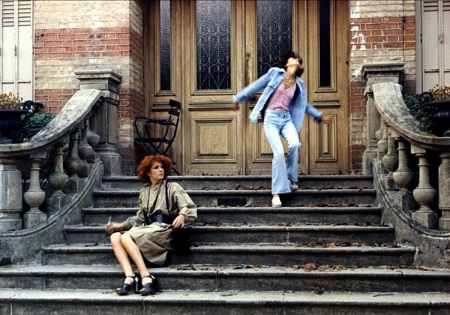

k.
boven: Céline et Julie vont en bateau | Jacques Rivette, 1974
onder: Persona | Ingmar Bergman, 1966
l.
Copie conforme | Abbas Kiarostami, 2010
